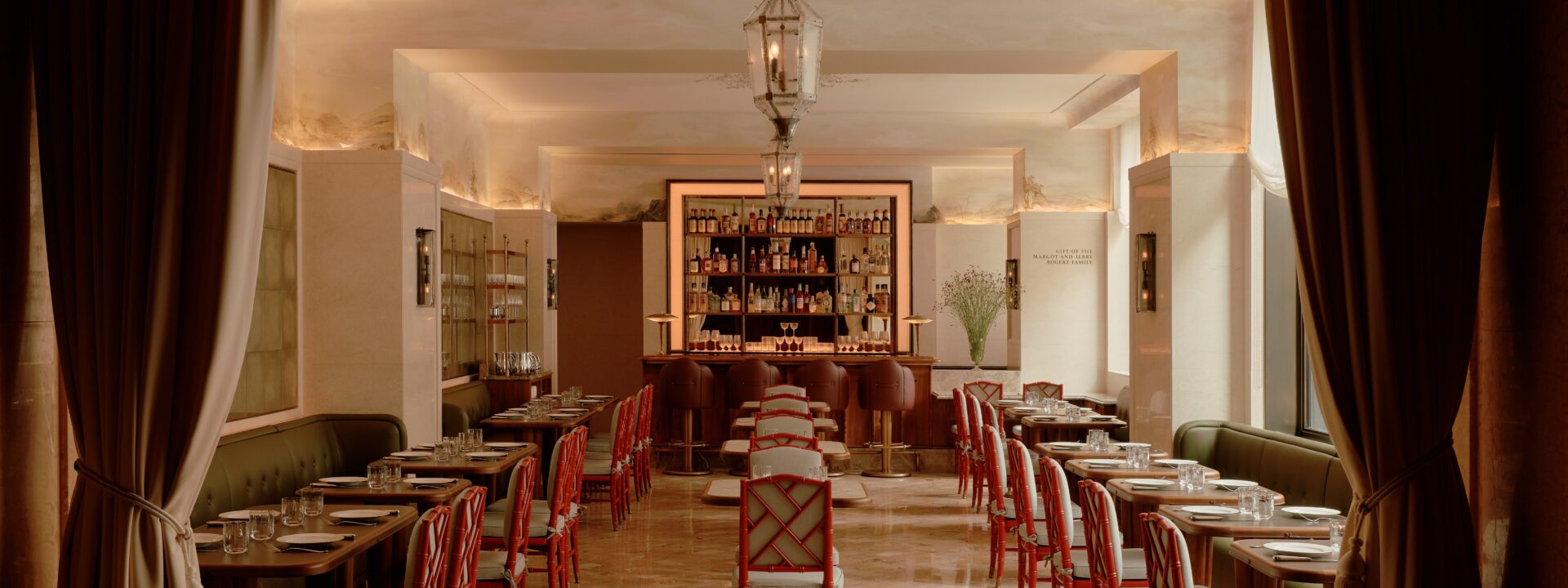The reopening of the Frick Museum in March was one of New York City’s most eagerly awaited events in years. So much so that it seemed like everything had already been said about it—glossy features appeared everywhere from Architectural Digest to The New York Times to Vogue, while crowds of New Yorkers lined up outside Henry Clay Frick’s former Upper East Side mansion to explore its newly renovated halls by Annabelle Selldorf. Anyone who hadn’t visited yet faced persistent questions at spring dinner parties: “Have you seen the new Frick?”
But as it turns out, there’s still more to discuss. On June 6, the museum unveiled its new café: Westmoreland.
Photo: William Jess Laird
Named after the Frick family’s Pullman train car, Westmoreland is a jewel-box space on the museum’s second floor. The entrance resembles a moody enchanted garden, with a forest-green mohair settee and a woodland mural, Fugue, by Darren Waterston. The dining room echoes the pastel tones of a Fragonard painting, with pink-hued floors and red bamboo chairs. Another Waterston mural, Arcadia, wraps the walls in a dreamy cream-colored landscape.
Photo: William Jess Laird
Photo: William Jess Laird
The interiors were designed by Bryan O’Sullivan Studio, an AD100 firm led by a former apprentice of Annabelle Selldorf. O’Sullivan told Vogue that inspiration came easily: “We took a lot of cues from the Frick itself.” The red bamboo chairs, for instance, nod to the red-robed cherubs in the Boucher Room (designed by Elsie de Wolfe) and the scarlet-cloaked monkeys in J. Alden Twachtman’s chinoiserie mural. As for the green? “We noticed how often it appeared in the Frick’s paintings,” O’Sullivan explained. “Then there’s the Russell Page garden right outside the window.” (A subtle floral motif behind the bar even features the “burnet,” a perennial plant from the grounds.)
One of his favorite details? The organic bas-relief ceiling medallions by Waterston, resembling ivy creeping across the walls. “They look like they’re growing right out of the ceiling,” he said.
Photo: William Jess Laird
Photo: William Jess Laird
Beneath them, walnut tables with brass accents sit alongside leather banquettes—a subtle industrial touch inspired by the Frick’s historic Pullman car. O’Sullivan designed them to evoke the plush seating of Gilded Age train cars.
This summer, visitors can enjoy a caramelized onion and thyme scone or poached trout in a space as artful as the museum’s own galleries—before spending the afternoon surrounded by masterpieces.
